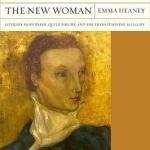The New Woman: Literary Modernism, Queer Theory, and the Trans Feminine Allegory
BookThis item doesn’t have any media yet
2017 | Essays
The New Woman: Literary Modernism, Queer Theory, and the Trans Feminine Allegory traces the creation and significance of the trans feminine as an allegorical figure from its origins in late nineteenth-century sexological writing to subsequent writings in the fields of psychoanalysis, Modernist fiction, and contemporary Queer Theory. The first study to identify the process by which medical sources simplified the diversity of trans feminine experience into a single diagnostic narrative of transsexuality, The New Woman illuminates how trans women were identified as archetypes for the redefinition of sex roles in works by artists and writers such as Aldous Huxley, James Joyce, Djuna Barnes, T. S. Eliot, and Jean Genet. She demonstrates how Modernism borrowed the sexological trans feminine as the embodiment of the "sexual anarchy" of the period. Thus illuminating the trans feminine's Modernist provenance, The New Woman examines foundational works in Queer Theory to demonstrate how the Modernist trans feminine allegory was resuscitated at the end of the twentieth century.
Insightful and seminal, The New Woman debunks the pervasive reflex beginning in the 1990s to connect trans people to a perceived collapse in sexual differences by revealing the late nineteenth-century and Modernist roots of the figure.
Related Items:
| Published by | Northwestern University Press |
| Edition | Unknown |
| ISBN | 9780810135536 |
| Language | N/A |
Images And Data Courtesy Of: Northwestern University Press.
This content (including text, images, videos and other media) is published and used in accordance
with Fair Use.
